Dehydrating Sourdough Starter: Long-Term Storage
Looking for a way to save your sourdough starter? I like to dehydrate my starter so I always have a long-term backup in case anything were to happen to my sourdough starter. If you’ve made a sourdough starter from scratch, you know the labor of love it is! There’s no way I want to chance losing my starter, so dehydrating some starter to save as a backup is important. I also love gifting dehydrated sourdough starter to friends who want to start their sourdough journey. It’s the gift that keeps on giving. This is how to dehydrate and rehydrate your sourdough starter.

Long-Term or Short-Term Sourdough Starter Storage
Sourdough starter can be kept in your fridge with a weekly feeding and can usually be kept in the fridge for up to a month or longer if you need it to be. An extended vacation or a change in schedule can sometimes keep a starter lurking in the back of the fridge for awhile. Another great option is to dehydrate your starter. Once the starter has been dehydrated. Place it in an air-tight container. Store it in a cool, dry, dark location for many months or even years before you rehydrate it.
How to Dehydrate Sourdough Starter
If you have been feeding your starter at room temperature daily: Feed it like normal and wait until the starter doubles in size and is very bubbly and ripe.
If you have been feeding your starter weekly in the fridge: Feed your starter like normal and let it rise until doubled and bubbly. At that point, I like to take some of the starter and feed it again so I have a very active starter that I’m dehydrating.
Line a baking sheet with parchment paper. Use an offset spatula to spread the bubbly sourdough starter very thinly onto the piece of parchment paper.
Let the starter air dry for up to 24 hours. If after 24 hours the starter is not dry, try setting it in your oven with the oven light on. Make sure your oven is turned OFF. Turning the oven on will kill your starter. Leaving just the oven light on with the starter inside and the door closed will give off enough heat to help dry out the starter. Alternatively you can leave it out at room temperature to dry for another few hours. It is also possible to use a dehydrator on a very low setting (shoot for 80-90 degrees F) to dry out the starter.
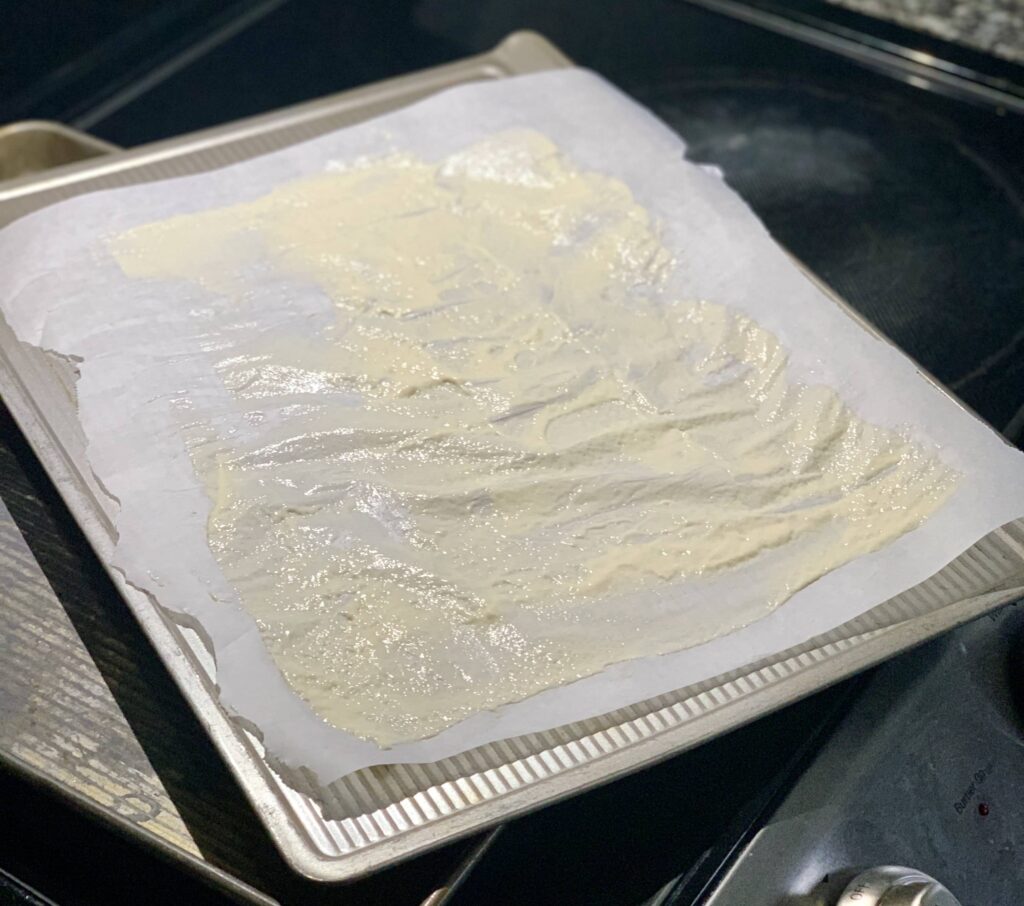



Once the starter is completely dry, break it up into little pieces and place in an airtight container. Store in a dark, cool place for many months or up to a few years.


Travel. Take a Break. Mail some to a Friend.
Once your starter is dehydrated and stored, go ahead and gift some. Keep some in your pantry so you have a true backup starter. Once you are ready to bake with your starter again, start the re-hydration process. This will take about 2 days (48ish hours) to get your starter nice and bubbly. Remember, this process is also dependent on temperature and climate, so plan accordingly.

How to Re-hydrate your Sourdough Starter
Note: If you are in a new-to-you area and don’t know the properties of tap water (some tap water has small amounts of chlorine in it, which is not good for sourdough), feed your dehydrated starter with filtered or bottled water
First Hour
Choose a jar to rehydrate your starter in. Place the dehydrated starter into the new jar. Pour water into the jar and cover the dehydrated starter with water. The water should just cover the dehydrated starter. Keep the temperature at 78-80 degrees Fahrenheit. Read here for why temperature is so important to sourdough.
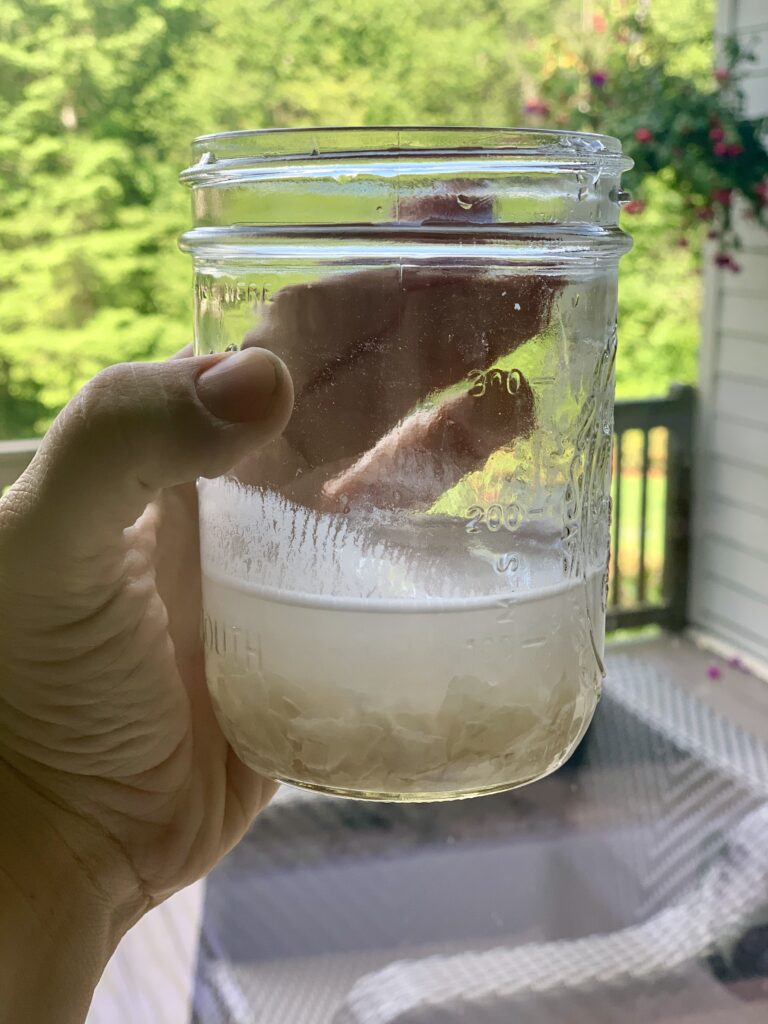
1-4 Hours
Stir the starter every hour for about four hours. Every time you stir the starter, notice how the sourdough is breaking down and the mixture is turning cloudy. After about four hours, the starter should be dissolved in the water. If it’s not dissolved, give it a little more time and keep stirring. Proceed once the starter is completely dissolved.



4-16 hours (or overnight)
Spoon about 1/4 cup of flour into the dissolved sourdough and mix to combine. Add more flour if the mixture is soupy. It should be the consistency of a thick batter. If needed, add 1-2 Tablespoons of water to keep the mixture the consistency of a very thick batter. Let the mixture sit overnight or about 12 hours.


16-28 hours: stir, feed and let sit for 12 hours
Check on the mixture. Look for bubbles, activity and maybe even some hooch (a thin, sour smelling liquid on the surface of the starter). If the starter has bubbles and looks active, feed* it. If it doesn’t look very active, let it sit in a warm place for a little bit longer.


*To feed the starter, discard 3/4 of the starter. Add 1/3-1/2 cup flour to the jar with the 1/4 cup starter remaining. Add a few Tablespoons of water and mix to combine to a thick batter consistency.
28-40 hours: stir, feed and let sit overnight (12 hours)
Stir down the starter, pour off any hooch and feed the starter. Mark your jar and watch as the starter rises and falls.
40-52 hours: stir, feed and let sit for 12 hours
If the starter hasn’t doubled in size yet, repeat the feeding process. Feed the starter. Mark the jar and watch for it to become bubbly and rise.
Ready to use Again
Once your starter is rising and falling predictably, it is ready to use! Location, ambient temperature, environment etc… will determine how quickly this process or re-hydrating works but your starter should be rising and falling within 48-72 hours keeping a temperature of 78-80 ºFahrenheit.
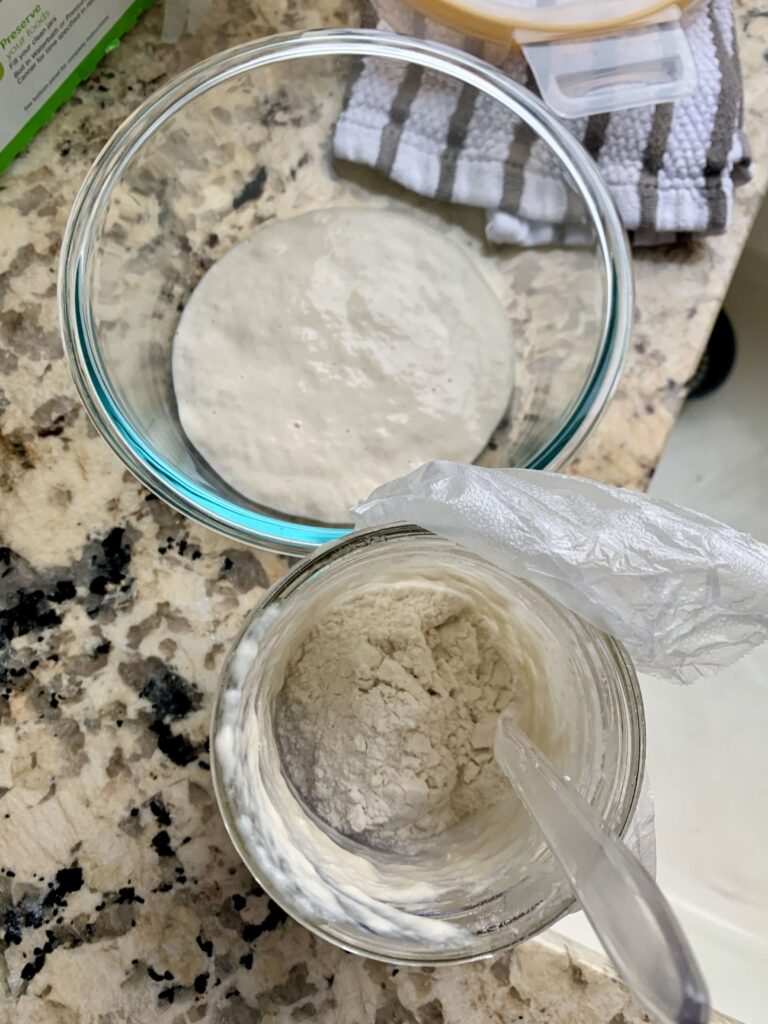
From this point, you are just a few simple ingredients away from some very, very good bread that won’t take you a week or more to make your own starter! If you are looking for some good sourdough bread recipes, check out some of my favorites here, here and here.


Sourdough Beginner Guide
Want more in-depth Sourdough instruction?
Check out my online sourdough classes or take a class in person.

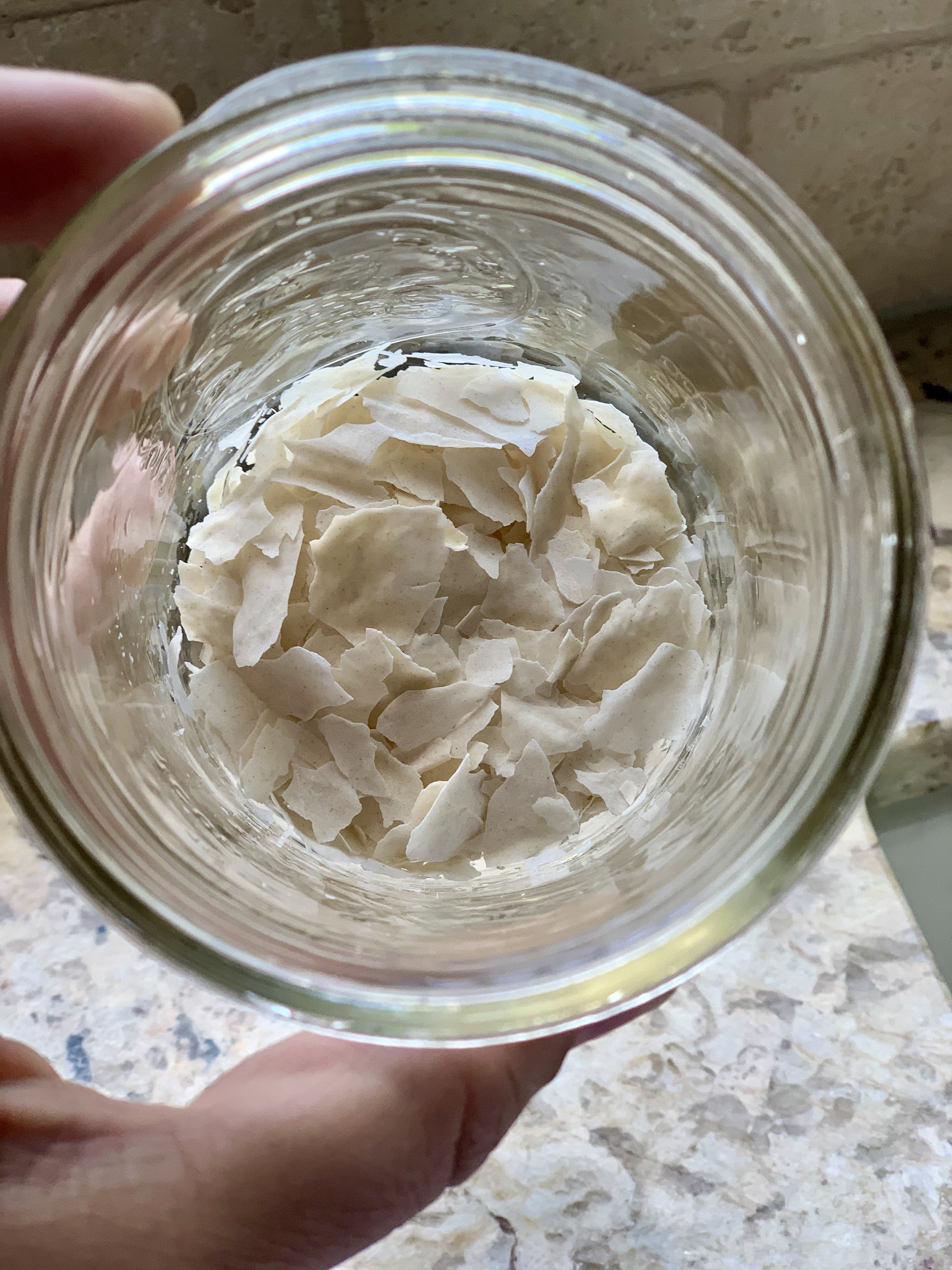
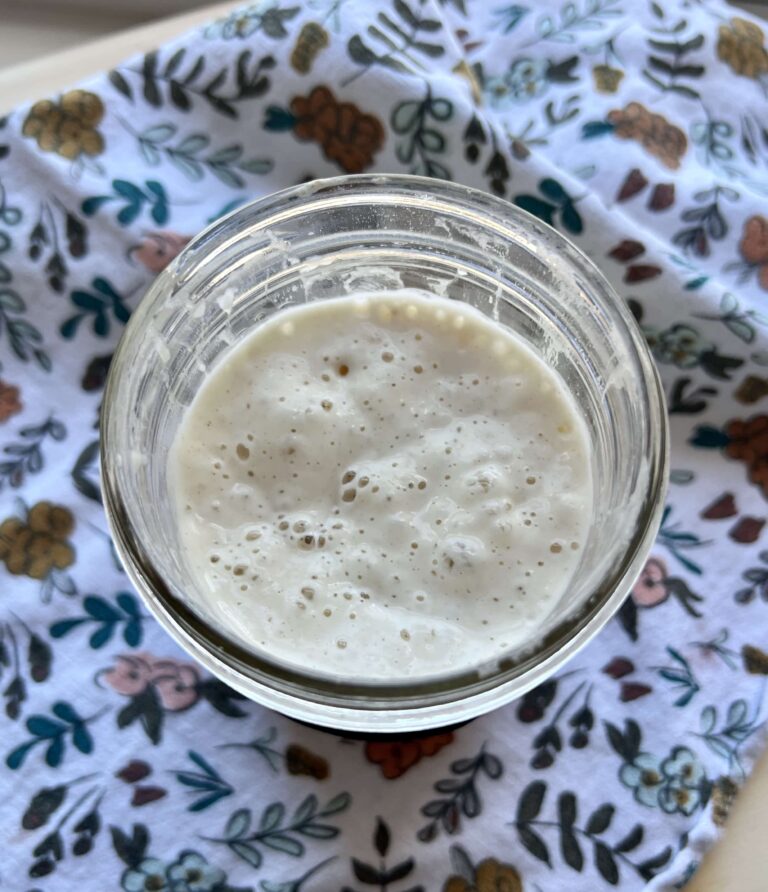
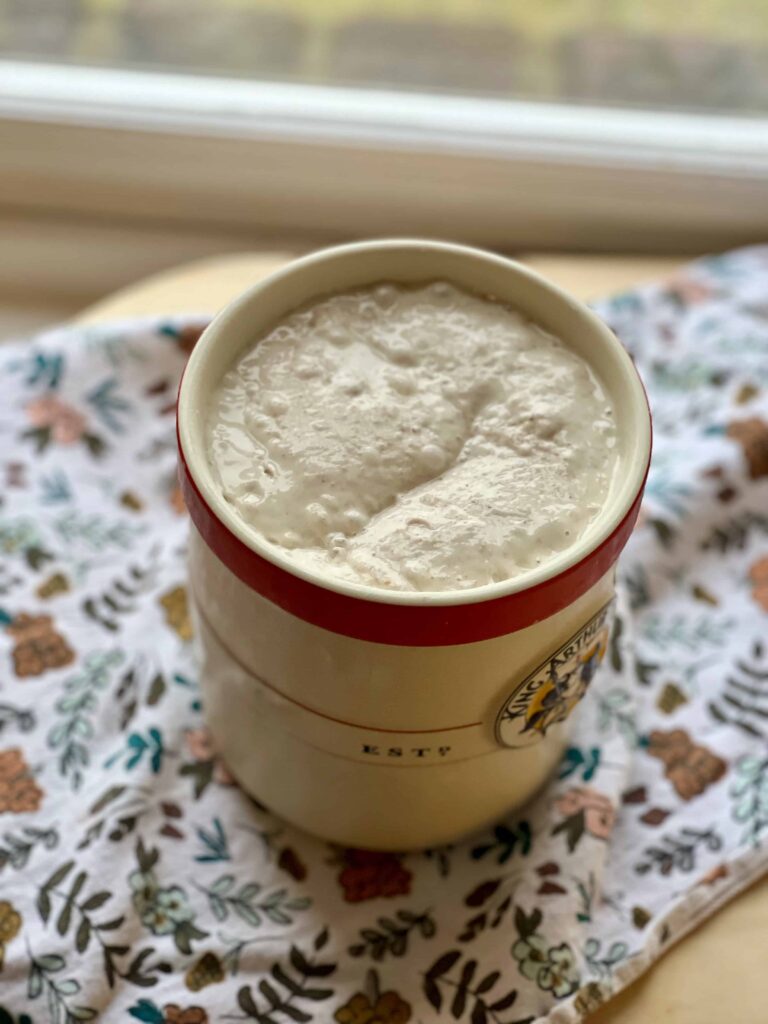
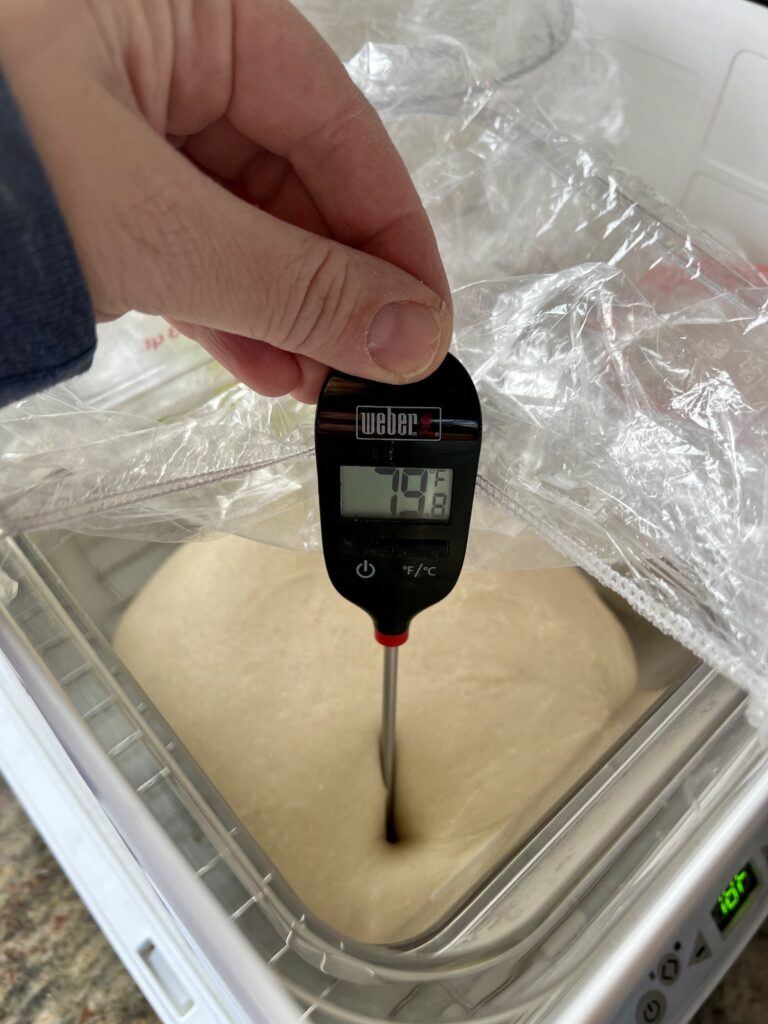
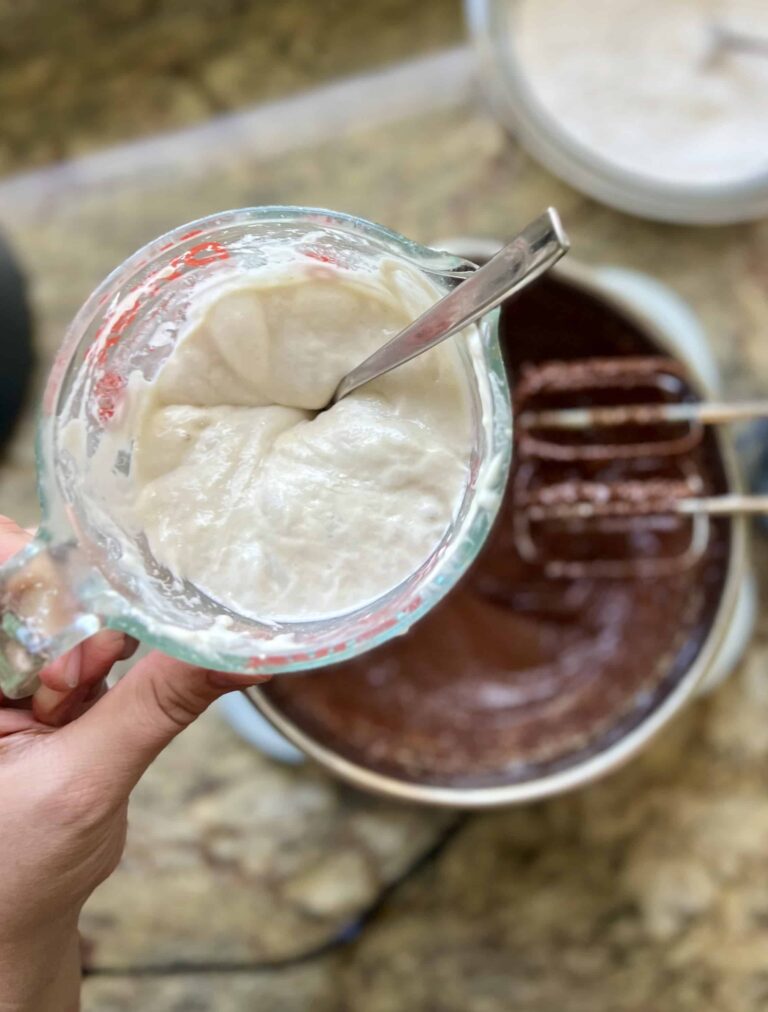
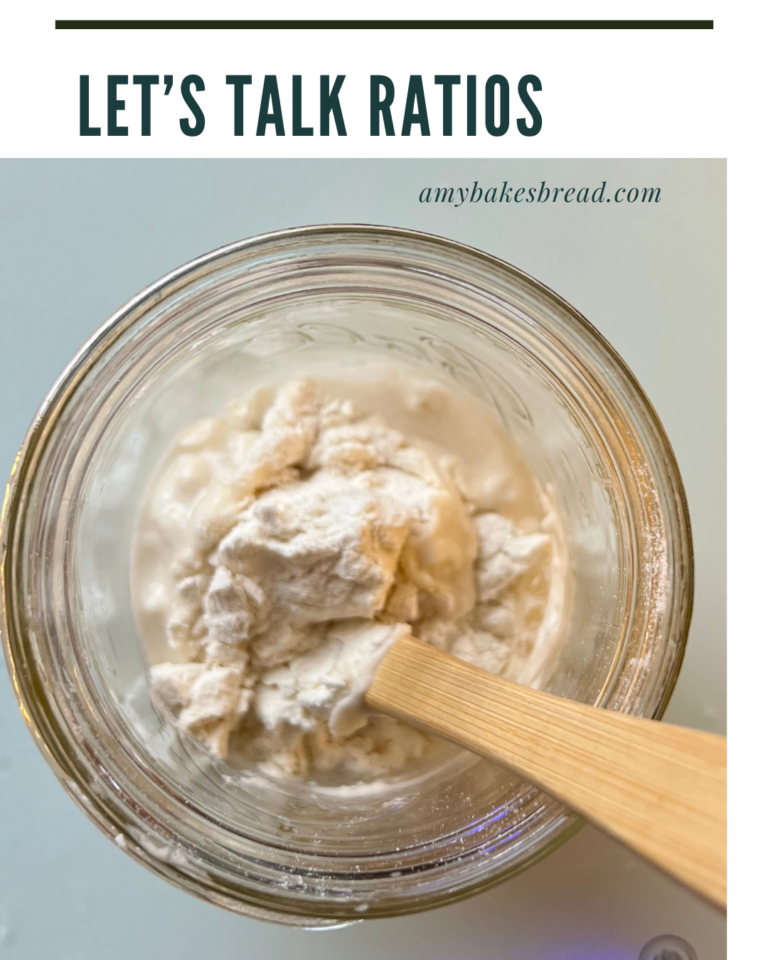
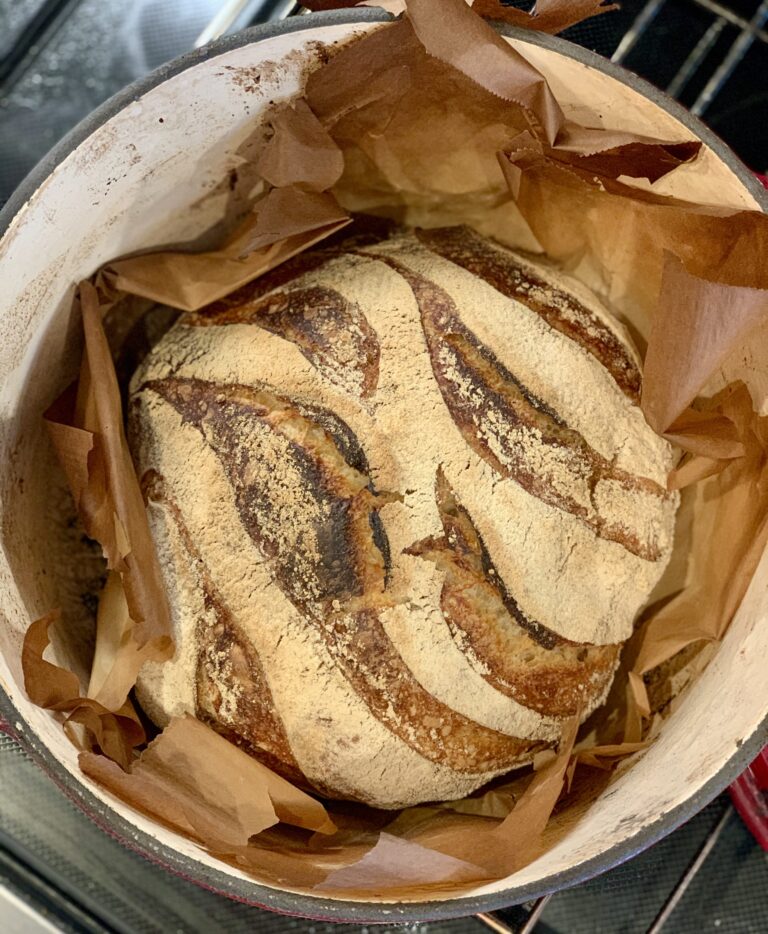
We are grateful to be the well-fed beneficiaries of your rehydrated sourdough starter!! Thank you for bringing it across the miles and sharing all that deliciousness with us!! ❤️🍞🥖🥐🥞🧇😋
I have made dehydrated starter flakes to share later. I have stored in cotton cloth but you say airtight container. Does it matter. I don’t want it to mold.
So grateful for your website. I am sharing It with other beginners🥰
I prefer storing in an air-tight container to keep it from molding and any critters. I haven’t tried it in a cotton cloth, so I’m not sure.